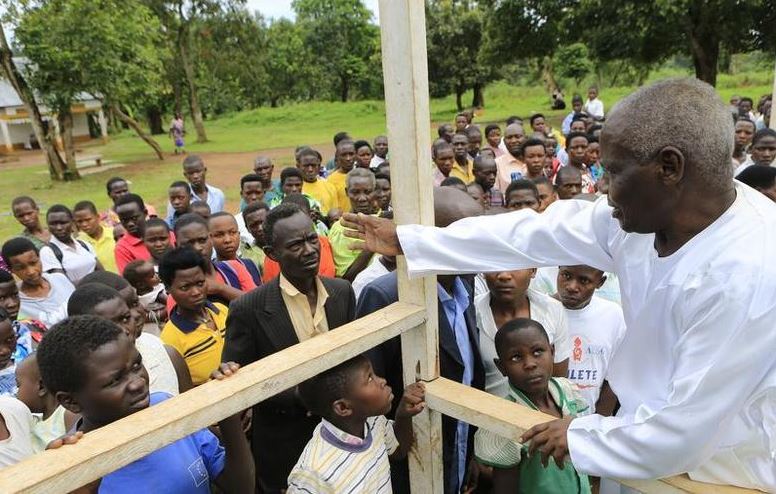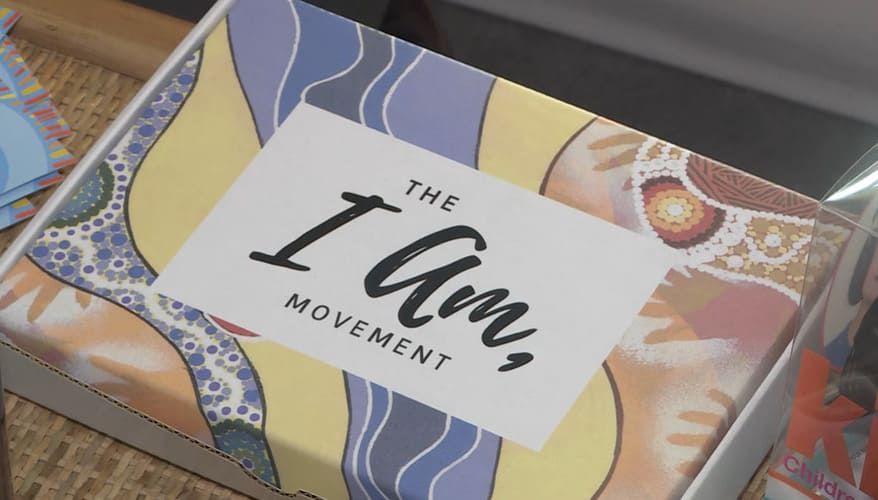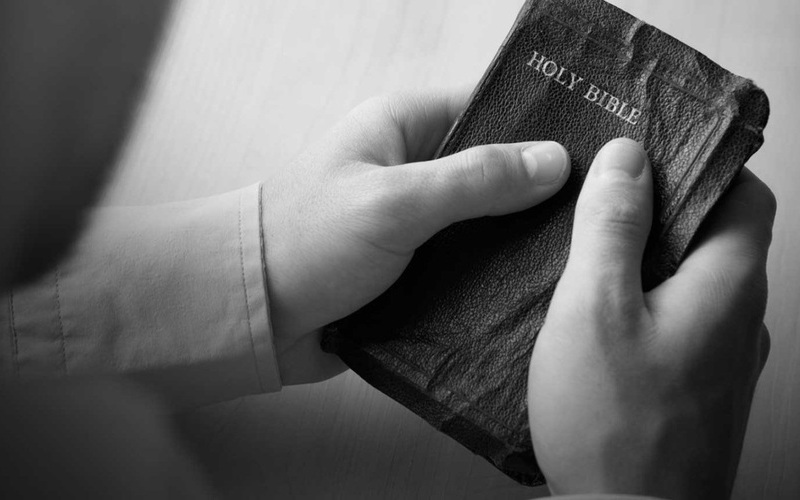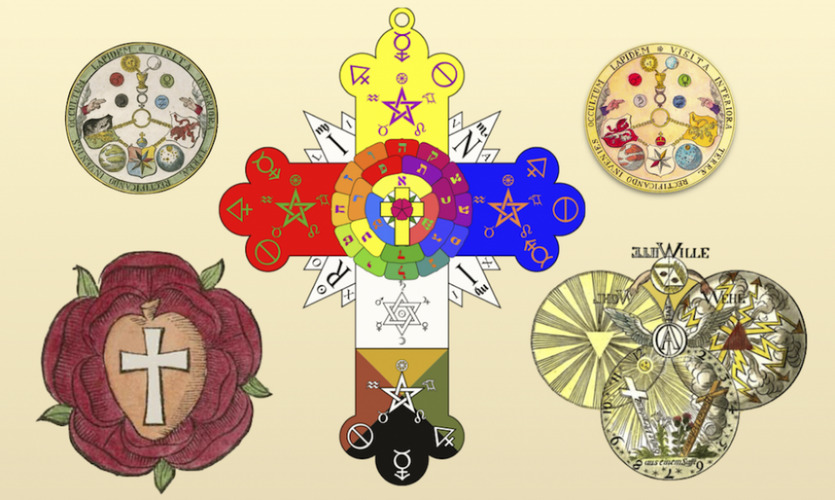Everything About Faith of Unity
Faith of Unity (FoU) is a new religious movement in Uganda, which became a dominant religion. Faith of Unity Church has many similarities with Christianity, which emerged as a response to the destitution caused by colonialism in African societies.
Faith Of Unity History:
The Faith of Unity movement is arguably the fastest-growing religious movement in Uganda with more than 7,000,000 members spread across the entire Great Lakes Region. This observation contrasts sharply with the often-quoted but rarely supported assertion by scholars that Pentecostalism is sweeping across Africa like wildfire. The FoU started as a healing movement with its historical, ritual, aesthetic, and doctrinal roots in the Catholic Church in western Uganda. Itambiro ly’Omukama Ruhanga Owamahe Goona Ery’Obumu (The Association of the Healing Place of God of All Army) was founded by Dosteo Bisaka, a former Catholic catechist and primary school teacher, in 1980 at Muhorro in what was then Kibale District (since 2016 it is in Kaigadi District) in western Uganda.

Faith Of Unity Founder:
Bisaka was born on June 11, 1930, at Kitoma Kiboizi village which is in the catholic parish of Bujuni, where his father, Petero Byombi, was stationed as a parish catechist. As an official of the Catholic Church, Petero served as a catechist for fifty-eight years, a position that offered the opportunity to learn, understand and teach Catholic doctrines and rituals. In this position as a catechist, he also accumulated sacred capital that helped during Bisatka’s formative years. Bisaka’s great-grandfather, Petero Muhiigi, was a first-generation Christian. Very little is known of Bisaka’s mother, Agnes Kabayoora because the young Bisaka was sent at the age of eight to live with his grandparents, Alifonsio Wenkere and Martha Nyakake. Alifonsio. A most abiding and defining influence in Bisaka’s upbringing and religious education was his grandmother, Martha.
Bisaka fondly recalls the influence of this grandmother in the formation of his [Bisaka’s] spiritual desires and quest. Bisaka’s Catholic background and the intense devotion of both his parents and grandparents instilled in him a desire for the Catholic priesthood. In 1944, he sought admission to the diocesan junior seminary for the training of Catholic clergy. He failed to get admitted, but there was no specified reason for his rejection. When Bisaka finished Mugalike School, he enrolled in Nsamizi Teacher’s College, Mityana, from where he graduated with a Grade III Teachers Certificate, qualifying him as a school teacher. With his new qualification, Bisaka taught at the Catholic Primary School at Muhorro for thirty-five years.
Bisaka’s failure to train for the Catholic priesthood did not dampen his spiritual enthusiasm and desire to serve in different capacities within the Catholic church. As a gifted singer, he soon became the choirmaster of Muhorro Catholic Parish, the neighbourhood where he was employed. In addition to this role, he became the secretary to the Muhorro Catholic parish and the spiritual counselor and advisor to the Confraternity of the Legion of Holy Mary Mother of Grace. As time passed, he left the secretary’s position and became the Chairperson of the Parish Council, a lay position of enormous responsibility and prestige. His religious profile increased when the diocesan ordinary, Bishop Albert Edward Baharagate of the Catholic Diocese of Hoima (1969–1991) appointed him to the Diocesan Liturgical Committee. This was a clear recognition of his musical gift and contribution to the liturgical life and rituals of the local Catholic community.
The widespread acknowledgments for his contribution caused some members of the local clergy to interpret his gifts as a unique vocation, a divine election, or sacred office.
Dignities Of Bisaka:
Consistent with the character of charisma, Bisaka attributed his “gift” of musical composition to a superior power beyond his limited learning or capability. He claimed that his songs and the musical notes came to him effortlessly without “search[ing] for it” (Bisaka 1987:9); he received them through “special inspiration.” In making such a claim, Bisaka looks upon himself as a divine receptacle, a vessel made ready through decades of teaching under his Catholic grandparents and catechist father as well as years of active participation in fashioning a vibrant liturgical life for the Catholic community of Hoima Diocese. His career as a composer of ritual music came to head in 1975 with the composition of a song that marked a turning point in his religious life and self-understanding as a religious leader. In that year, he composed a song titled “Nkaikiriza Ruhanga Murungi,” (My God is Good). Consisting of twenty-four short verses or sentences, Nkaikiriza was an unusually popular song that became a favorite of many parish choirs who used it in the Catholic Mass. When this song was used in church during the Eucharistic celebration, Bisaka claimed a certain bodily sensation would start to occur around his arms and hands. With time, the chanting of “Our Lord’s” prayer during liturgy started producing similar bodily sensations as the Nkaikiriza. As a laity, he was unsure how to interpret his mystical experience of “there started coming to His arms a special kind of power whenever He would sing it in church,” but some church leaders he confided in informed him it was as a result of the praises he composed in Nkaikiriza.
The bodily sensations during worship went on for five years. In late 1979, he claimed to have heard a voice “commanding Him, ‘You shall heal people by touching them’” (Bisaka 1987:10; emphasis in original). While the voice persisted several times, he ignored it for three months for fear of not knowing how to proceed, that is, how to utilize or unpack such an instruction. He also did not know how his employer, the Catholic church, a dominant and powerful social institution in western Uganda at the time, would relate to such a phenomenon should he make it public. All the trepidation and uncertainty vanished on February 22, 1980, when he mustered courage and “accepted and touched a [sick] person and the person became healed! From there He proceeded with the work of saving people from diseases of different types” (Bisaka 1987:10). The ur-patient, the first person Bisaka touched and restored to health (the inaugural act that ignited his healing mission) was a young woman suffering from a high fever attributed to a malarial attack, a disease that is endemic in that part of Uganda (Katuura et al. 2007:48). That same act was also an epiphany of the Third Age of human redemption with Bisaka as the principal dramatis personae. Effectively, this date of touching and healing a sick person is celebrated in FoU as the date of the establishment of the organization, although it did not take the name of the “Association for the Healing Place of God of All Army” until much later.
Faith of Unity Church Beliefs:
This complex sentence encapsulates the key doctrines and purpose of the FoU. Bisaka is a receptacle and a mediator of a new revelation that instrumentalizes healing as a structure that restores broken bodies, relationships, and communities, which are what sickness and disunity bring in their wake. As a mediator and sacred healer, Bisaka is divine. Emanating from the trance-like mystical experience he had in December 1983, which senior elders of the congregation could only describe as “he went to the Lord God of Hosts” (§67), was a revealed knowledge of deity and his participation in sacred.
Book Of FOU:
Godhead that formed the core of the scripture, The Book of God. This revealed scripture is the part autobiography of the leader of FoU, and part ethical prescriptions and doctrine. It contains testimonies of early followers and believers in the Faith. It is also a hymnal and prayer book. For members of FoU, The Book of God is the revelation that overrides any and every other revelation; it is about a new sacred and cosmic order of beings and precepts. Readings are taken from it at every liturgical meeting and read aloud by a leader, like a proclamation. They are addressed to the entire congregation, all in flowing white liturgical garments, called kanzu, who chorus: “ego” (Runyoro for amen). Curiously, pronouns referring to Bisaka are idiosyncratically written with initial capitals. As a canon of faith and reminiscent of the ending of the biblical Book of Revelation (22:18-19), The Book of God concludes with an enigmatic and chilling, all-bold, sentence: “No person shall add or remove a word to or from this Book apart from its Author, Omukama Ruhanga Owobusobozi Bisaka” (Bisaka 1987:84; emphasis in original). This freezing verse is not the only thing that sets the book apart from other texts; it is also authenticated and sealed with two important elements: Bisaka’s signature and the logo of the FoU (1987:6). These three elements set the book apart from other sources of revelation familiar to the people or followers, such as the Bible and the Qu’ran.
In a question and answer session during an Orubungo, ecclesiastical visit, of Bisaka to Munteme, Bisaka told his congregations that the Bible is a fake and forged document because it was, unlike his own The Book of God, unsigned by the author. Signing the book of God is a way of authenticating authority, revelation, and authorship. Such authentication also seals and freezes revelation, even for adepts.
In a question and answer session during an Orubungo, ecclesiastical visit, of Bisaka to Munteme, Bisaka told his congregations that the Bible is a fake and forged document because it was, unlike his own The Book of God, unsigned by the author. Signing the book of God is a way of authenticating authority, revelation, and authorship. Such authentication also seals and freezes revelation, even for adepts.
This chilling and sealing sentence in the scripture has had a severe implication in the organization and doctrinal life of the FoU. Members are deterred from writing down anything about the ritual or history of the organization, because, according to some members, doing so would amount to “adding” to the revelation contained in The Book of God. Even subsequent editions and reprints of the scripture have retained the grammatical, dittography, and typographical errors in the original English edition because correcting such errors and mistakes could, or rather would be interpreted by the leadership of the group as adding and removing from the source of revelation, which is Bisaka himself. Because even highly educated members of the organization do not want to be seen to be adding or removing revelation, there is practically no documented commentary on the doctrines, history, practices, and rituals of the FoU. The group does not have a website, or an in-house magazine or bulletin. Congealed authority and revelation forbid such.
Rituals Of Faith of Unity Church:
The motto of FoU is “Obumu nigo mani,” “Unity is Power,” a cryptic sentence that aptly captures the heart and key concerns of the organization. Bisaka is a figure or sacred power who is mandated to use that charisma to restore unity to humanity by healing sickness and disharmony. To ritualize this doctrine or precept, the FoU has a new set of values that enable it to perform its function of re-educating humankind of the new era of civilization that Bisaka represents. One important innovation is in the mode of greeting within the group: when a member meets another, one calls out, “Okwahukana” (Disunity), and the other response, “Kuhoireho” (has ended). The second part of the ritual of greeting is kneeling. Every member, no matter her or his rank, kneels in the presence of Bisaka. Additionally, within the hall of worship (Itambiro, literally: a place of healing; pl. Amatambiro), everyone walks in barefoot; only Bisaka wears shoes inside the Itambiro or at the Kapyemi Camp. Removing one’s shoes and cap or “headcloth is a sign of respect and honor to God as creator” (§56-57). By this precept, women do not cover their hair and usually do not carry long hair. Generally, females kneel in the presence of men as part of the ritual of respect and greeting. Members of lower ranks, whether male or female, kneel before those of higher ritual ranks, whether male or female. The superior person usually touches the subordinate who is kneeling on the shoulder as a tactile ritual of acknowledgment. The Book of God (§244-245) explains the symbolic purpose of kneeling as an act of acknowledging ontological superiority and precedence
The sacred days of worship in the FoU are the second, twelfth, and twenty-second of each month. The choice of these days is informed by divine will. Although salvation is a daily striving, these three days are “[t]he days on which the Lord God performs miracles of saving all people from Satan, the enemy, and from their disease …” (§142; Bisaka 1987:26). On a day of worship, believers begin to arrive at the Itambiro as early as seven in the morning and gather at the outer edge of the compound in ritual preparation and anticipation of the appearance of Bisaka. Ritual preparation involves a series of steps or acts, the first of which is self-introspection during which the believer responds to a set of twenty-three questions contained in The Book of God (pp.55-56).
Religious elders assist believers in navigating the self-interrogation of the twenty-three preparation questions. These elders gather believers around themselves and explain aspects of the scripture and what is required of them. They help the believers remember their failings and confess them appropriately to prepare for admission into the Itambiro ritually. A member (muhereza) is not permitted to consume an alcoholic beverage or smoke cigarettes; much canned or processed food or fizzy drinks is considered by some elders as Illuminati products designed by evil powers from the western world to ensnare and damage members. At the end of the self-inspection, the next phase is the confession of one’s sins and infractions. Confessing one’s sins in “secrecy” is an integral point of preparing for a healing encounter with God (§8). Sin is regarded as a disease: confessing it is seeking health.
The most intense section of worship events, the healing segment, occurs just before the end of the service. On cue, the congregants file out of the chairs or sitting positions and stand in a rectangular formation around the altar/throne platform. Bisaka walks down from the right-hand side and moves along the formation physically touching the forehead of everyone with his opened right palm and at the same praying for them. Each round of touching and praying is concluded with Bisaka mounting the altar/throne, picking up his ritual staff, and raising his right hand with opened palm facing the congregation; he prays aloud for them for healing and prosperity.
Clothes Of Faith of Unity Church:
Members of FoU wear ritual garments for liturgical events. The long, white ritual gown is usually made of cotton fabric; it is called kanzu. The kanzu is secured in the waist by a white belt, a sash, made of the same material, called Kitara. Members’ kanzus are made of cotton fabric while Bisaka’s is made of shiny silk. Only the leader’s ritual garment can be made from silk, as a mark of distinction. His Kitara is different; it is broader and longer than others, just like the cincture of a Catholic bishop. The white garment symbolizes purity and holiness; the Kitara symbolizes a girdle that secures a metaphoric sword with which the believer fights the tempter. According to some research participants, the white kanzu makes the members “look very elegant like Catholic nuns and priests in formation” an aesthetic desire and design that must have informed the choice for the liturgical garment, considering the intimate history and knowledge of Bisaka of Catholic ritual life and behavior.
Organization Of Faith of Unity Church:
An organization that has God as its founder and leader does not have a human head. Bisaka is recognized and believed to be divine in a special way that humans are not. As a result, even as a leader and founder of the FoU, the organization has a special structure of authority that is hard to discern and describe. As a ranked association, structure and order are important to the performance of unity and healing. While the founder is the overall head of the organization and all decisions are deferred to him, the FoU is structured in terms of membership into four important ranks.
The FoU is divided into smaller congregations (amatambiro: akin to “parishes” in Catholic ecclesiastic structure) headed by a team of four officials called the abana: a chairman (usually a man and not a woman!), a secretary, an advisor, and a treasurer. A collection of amatambiro constitutes Obukwenda, again, like a diocese in the Catholic church). There were 1,340 worship centers in the country at the end of 2016 grouped into thirty-two such Obukwenda in Uganda alone, which report directly to Bisaka, “the founder of the Faith of Oneness in God, which will be called Owobusobozi’s Faith of Unity” (Bisaka 1987: 83). Bisaka is at the apex of the organization and power structure or authority as God, visioner, innovator, organizer of grace, and unifier of humanity. Every twenty-seventh of the month, all the leaders or head of Abana visit Kapyemi to render their stewardship in person before Bisaka.
Marriage In The Faith of Unity:
One important element in African culture that the FoU cherishes and propagates with zeal is polygyny. Bisaka is married to four women (the first died on December 22, 2003). He married his last wife in 2004. At the end of 2016, Bisaka had thirteen children (one deceased); seventy-four grandchildren, and 137 great-grandchildren. The explanation for Bisaka’s multiple marriages is that he, as God, needs to demonstrate to humans what it means to maintain a human family and authentic African family values. Further, the group maintains that God did not specify monogamy; Christianity is accused as the source of monogamous marriages in Africa and elsewhere in the world. In line with the example of the leader, male members of the FoU are encouraged to marry as many as “you can afford to maintain,” according to an elder, or “as he can afford to maintain well, as his fortune permits” (§197).
Women In The FOU:
Although there are strong women leaders in the FoU organization (even Bisaka’s immediate handlers are an all-female team) women still rank very lowly in the family and homestead. They are conceptualized as the source of sexually transmitted diseases (as if prostitution occurs only among women). They are not allowed to refuse sexual advances or marriage offers from men. According to a female member, young girls are encouraged to quickly marry men within the organization as a way of gluing them to the structures and influence of the movement as “women are thought to be fickle-minded and are the first to be turned away from the faith.”
Challenges In The Faith of Unity:
There are several challenges to the FoU and its future in the marketplace of religion, but none comes close to the routinization of charisma and leadership. There is no clear succession path within the organization. According to some elders, when asked about possible successors or rules of succession, they answer: “God cannot be succeeded.” The nature of Bisaka’s charisma which is embodied gift of healing the sick by sensory means is difficult if not impossible to transfer to another, to a successor. More so, Bisaka is not occupying an office; he is the office.
Bisaka as both doctrine and office constitutes another challenge in respect of the institutionalization of leadership and authority. Since no one from within the group is allowed to write about the group or debate history and doctrine, there is little evolution and expansion of ideas and refinement of doctrines and practices of the group. The challenge is compounded by the growing number of young members who are in the tertiary institutions of learning around the country who engage with modern social media in organizing their social and religious lives and would incorporate their activities within the FoU into the social media realm. Patriarchal authority as exists within the organization will increasingly be intense, even conflict, with a widening of the relational horizon and social consciousness by the recruitment of educated and urbanized persons.
World Religions
Read also:
Voodoo Religion | Meaning, History, Beliefs, Rituals and World View
UFO Religions | What do you know about it?
Tantric Buddhism | What are Tantric Buddhism? Everything You Need to Know
Sunni Islam | Meaning, Definition, And Doctrines of the Sunnah and their spread
Theosophical Society | Founder, Beliefs, History And More..




what is the source of what you have posted on the faith of unity movement? it is clear this is copied from a particular source and research of a particular scholar without acknowledging. Disappointing.
We are so sorry for your disappointment with our article
We have relied on the few resources we have
If you like, you can share other sources with us so we can study the topic and consider submitting another article that corrects the information we have.
When it comes to the Faith of Unity where we pray we don’t call it “church ” but we call it “ITAMBIRO” Meaning healing or God’s healing place. But not church as you have written it would have been FAITH OF UNITY ITAMBIRO, HISTORY, FOUNDER,BELIEF, THE BOOK AND MORE.